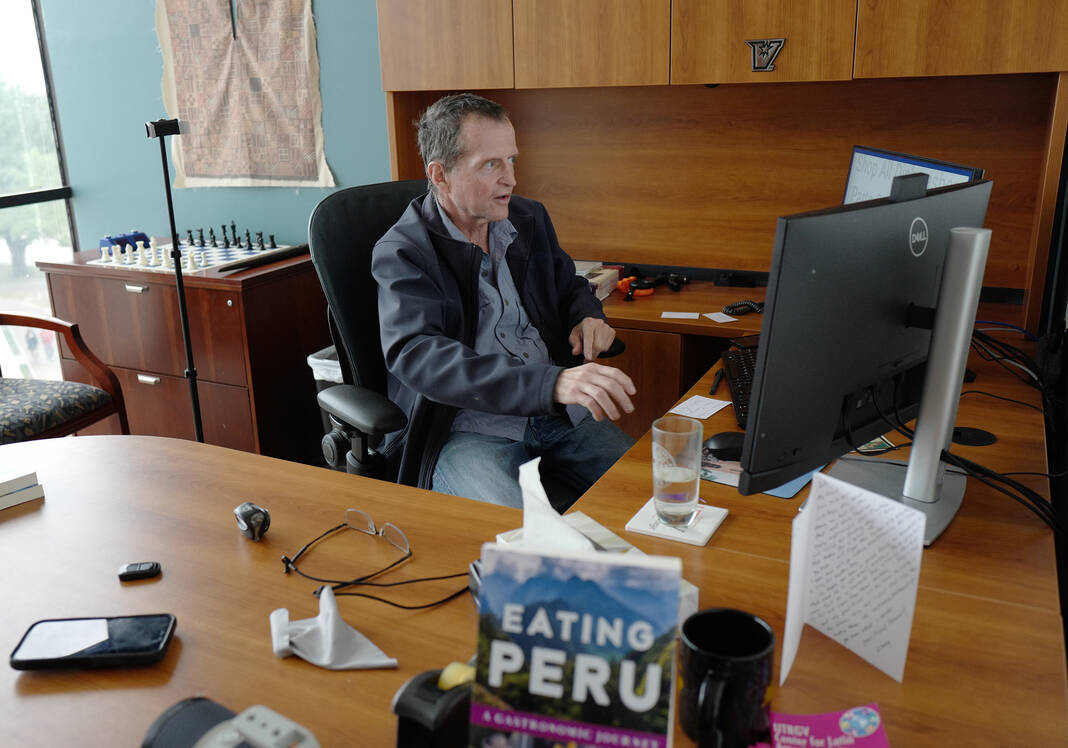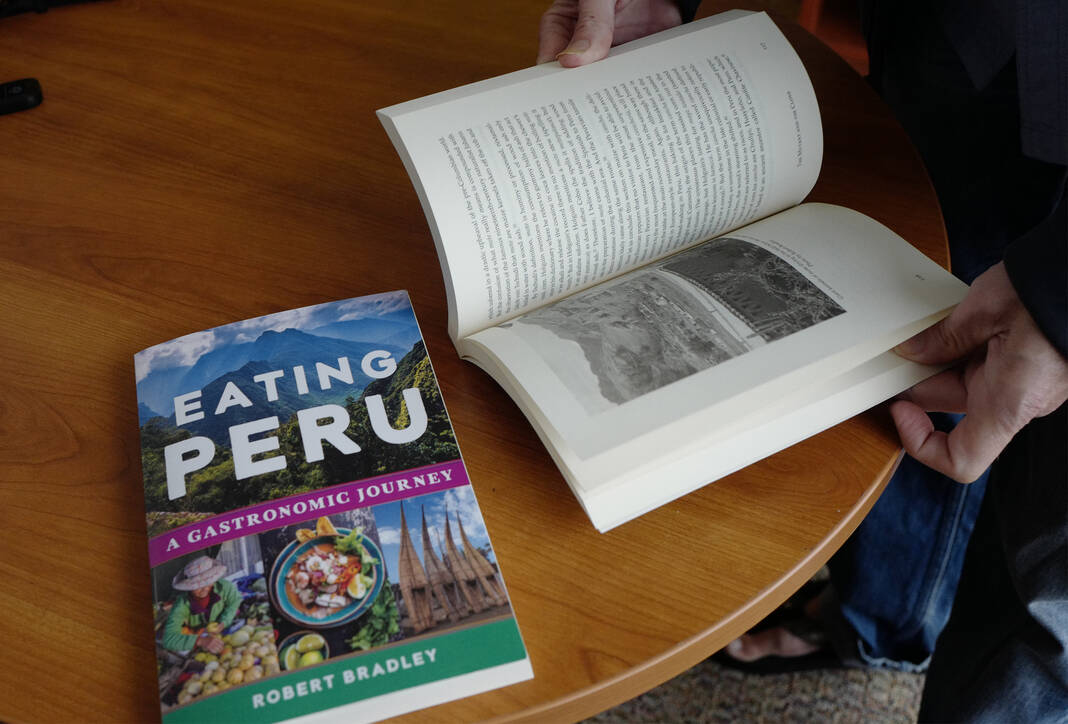In Peru, food is not just a source of sustenance, but a reflection of the country’s rich cultural heritage and “Eating Peru: A Gastronomic Journey” by UTRGV’s own Robert Bradley is a journey of 25 years into his knowledge, experience and appreciation of Peruvian cuisine and its fascinating lore.
A UTRGV Associates Dean for the Honors College and a professor in the School of Art & Design, Bradley has always been an avid foodie. From his time growing up in New Jersey and mastering Italian dishes to being a wine merchant in New York City to discovering the great food offered on Peru’s northern coast.
He said putting 25 years of experiencing Peru and its cuisine in a book was something he just had to do.
The book took about two to three years to write.
Describing his book as a bit idiosyncratic, Bradley focuses on aspects of Peruvian cuisine such as certain foods, the history behind them and his experience related to it.
Some of the chapters featured are about the fresh fish found in Peru, the different types of fruit, foreign influences and about how to go about in mercados and restaurants.
The book also features a list of his own Peruvian recipes for anyone wanting to have a taste.
Sharing his experience of buying fresh fish at mercados in Peru from local fishmongers, who were mostly women, he said the fish bought there is fresher than even the most expensive seafood markets in New York City or Los Angeles.
“Off the coast of Peru, there is the Humboldt Current, which is this freezing current that comes up from Antarctica,” Bradley said. “So if you go to Peru and you think you’re going to jump in, in a bathing suit, you’re not … but that means that the fishing is just incredible. There’s so many types of fish, so you have the greatest maritime environment in the world.”
With Peru having a long and complex history, he dives into that history and the relationship with the food that shaped the country.
 UTRGV’s Dr. Robert C. Bradley talks about his summer abroad with his students in Peru on Thursday, April 18, 2024 in Edinburg. (Delcia Lopez| dlopez@themonitor.com)
UTRGV’s Dr. Robert C. Bradley talks about his summer abroad with his students in Peru on Thursday, April 18, 2024 in Edinburg. (Delcia Lopez| dlopez@themonitor.com)Having a whole chapter on foreign influence, he writes about the Chinese and Japanese influence in the country but throughout the book he also talks about Indigenous people and pre-Colombian foods and recipes found in Peru.
Known for making a ‘killer pisco sour’ among the UTRGV faculty, pisco is another topic of the book, which Bradley even shares his own recipe for.
Pisco is a type of brandy made by distilling fermented grape juice into a high-proof spirit which was made when Spanish colonists planted grapes in southern Peru.
Describing it as flavorful and not bitter he said it takes about three bottles of wine to make one bottle of pisco.
“For every three shots of a pisco I would have one shot of a simple syrup,” Bradley said. “I make my own simple syrup, where I take a portion of sugar, let’s say 16 ounces of sugar or 16 ounces of spring water distilled and reduce it down to half till it’s syrup. I use about three quarters of a portion, one portion of key lime juice, and then egg white. And then you … put it in a blender … and then you just top it off with a little bit of bitters. It’s an amazing drink.”
Having an extensive knowledge of pisco and its history in Peru and even in California before prohibition in the 1920s, he said he wants his next book to be solely about pisco.
One chapter that might not be found in other books is “Everything You Always Wanted to Know about coca but Were Afraid to Ask.”
Coca is a plant native to western South America and is known worldwide for its psychoactive alkaloid, cocaine.
“I’m firmly in that school where coca is not a drug,” Bradely said. “It’s not a drug until you add toxic chemicals and make it into a paste, that’s when it becomes illegal. But in Andean nations, chewing coca leaves or having coca leaves is perfectly legal. If you go to Cusco, it’s all over the place. They make coca tea, every hotel has leaves you can put in your tea. It’s a placebo.”
 UTRGV’s Dr. Robert C. Bradley sifts through the pages of his cookbook on Thursday, April 18 ,2024 in Edinburg. (Delcia Lopez| dlopez@themonitor.com)
UTRGV’s Dr. Robert C. Bradley sifts through the pages of his cookbook on Thursday, April 18 ,2024 in Edinburg. (Delcia Lopez| dlopez@themonitor.com)Coca is even mixed with pisco sours to make a coca sour which he said is his favorite.
“They put coca leaves in a pisco and they leave it there for like a week and it takes on this green tinge to it to get the vitamins, minerals, the cocaine out of it,” Bradley said. “You either need an alkali or you need a solvent and alcohol is solvent. Then use the mix and … you use the same portion of lime and everything else. It’ll come out with this like green tinge to it and instead of putting bitters on the top, you put a coca leaf. Coca sours a big drink now in Cusco and Lima.”
He said he hopes that if anyone is planning to visit Peru in the future to read the book to get a better understanding of all the cuisine they will indulge in and the history behind it.
“Eating Peru: A Gastronomic Journey” can be found on Amazon, Barnes and Noble and at the University of Oklahoma Press.
The post Peruvian Passion: UTRGV professor puts two decades of devotion into book appeared first on MyRGV.com.
 (2).png)
 3 months ago
97
3 months ago
97








 English (US)
English (US)